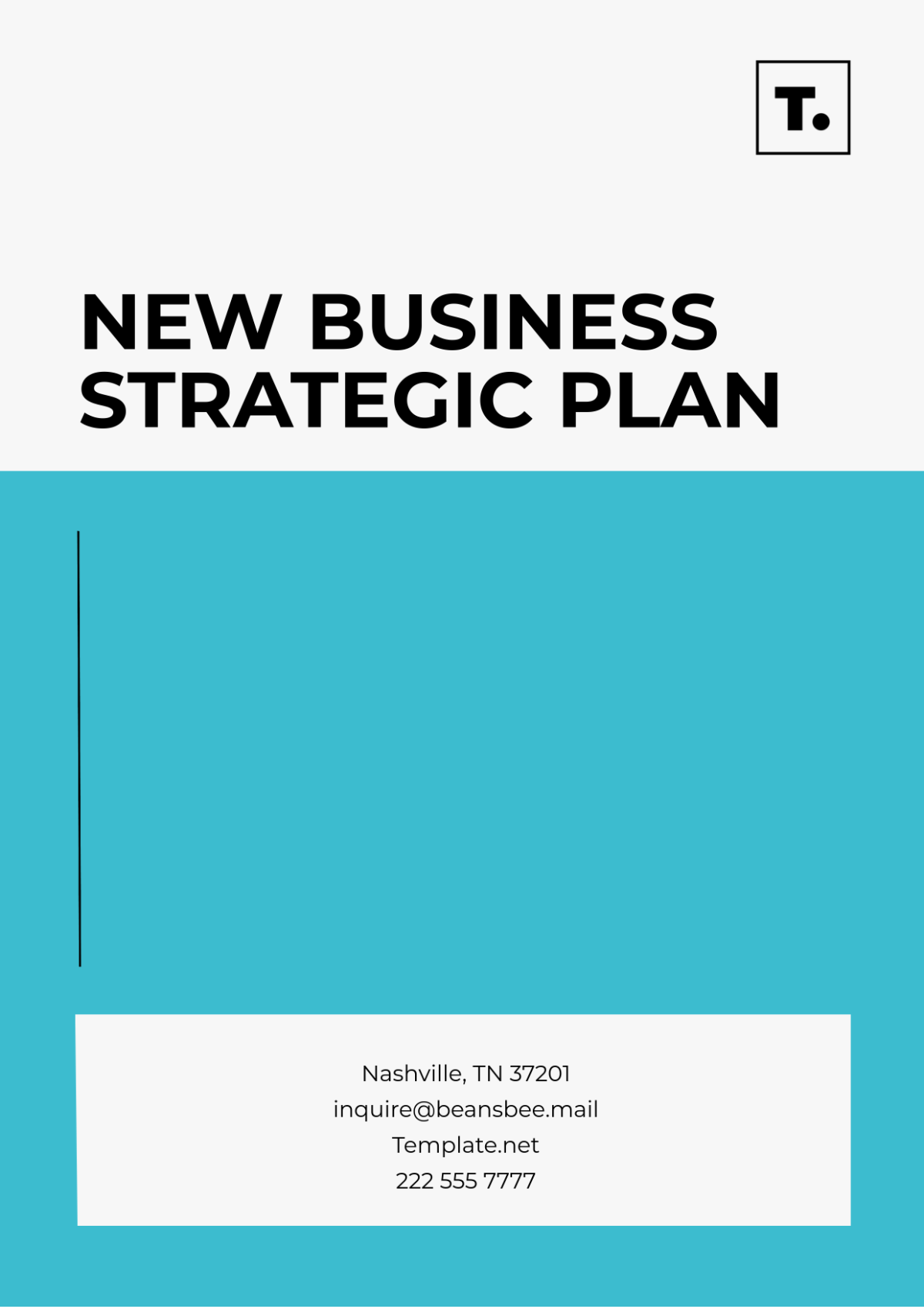Free New Business Strategic Plan

I. Executive Summary
The Executive Summary provides a concise overview of the strategic plan for [Your Company Name], a forward-thinking technology firm aimed at revolutionizing the way businesses leverage artificial intelligence (AI) and automation. Our vision is to empower organizations to maximize efficiency and drive innovation through cutting-edge solutions.
Key objectives include:
Capturing a 10% market share in the AI solutions sector by 2055.
Developing partnerships with at least five leading organizations in technology and manufacturing by 2053.
Achieving a revenue target of $50 million by 2055, driven by innovative product offerings and service expansions.
II. Business Description
[Your Company Name] operates in the rapidly evolving tech industry, focusing on AI and automation. Our mission is to democratize access to advanced technologies, making them accessible and beneficial for businesses of all sizes.
A. Mission Statement
Our mission is to harness the power of AI and automation to simplify business processes, enhance decision-making, and create sustainable value for our stakeholders.
B. Vision and Values
We envision a future where every organization can leverage technology to achieve its full potential. Our core values include innovation, integrity, customer-centricity, and sustainability.
C. Business Structure
[Your Company Name] will operate as a C-Corporation, allowing for flexibility in growth and investment. The governance structure will include a Board of Directors and an Executive Leadership Team to oversee operations.
III. Market Analysis
The market analysis indicates a growing demand for AI-driven solutions across various sectors, including healthcare, finance, and manufacturing.
A. Target Market
Our primary target market comprises medium to large enterprises seeking to enhance operational efficiency and drive innovation. Key demographics include technology managers and decision-makers aged 30-50, with a strong focus on industries poised for digital transformation.
B. Industry Analysis
The AI solutions industry is projected to grow at a CAGR of 25% through 2055, driven by advancements in machine learning, natural language processing, and automation technologies. Emerging trends include the increased adoption of AI in remote work solutions and customer service automation.
C. Competitive Analysis
Key competitors include Virtooso and Diversa While they have established market presence, [Your Company Name] differentiates itself through tailored solutions, exceptional customer support, and an agile development approach.
IV. Operational Plan
This section outlines how [Your Company Name] will deliver its products and services effectively.
A. Operational Strategy
Our operational strategy focuses on developing agile methodologies to ensure the rapid deployment of AI solutions. We will implement continuous feedback loops with clients to iterate on products.
B. Technology and Equipment
We will invest in state-of-the-art cloud infrastructure and AI development tools to enhance our service delivery capabilities. Partnerships with leading tech providers will ensure access to the latest innovations.
C. Human Resources
Our workforce will consist of highly skilled data scientists, software engineers, and business analysts. We plan to recruit top talent through partnerships with universities and targeted recruitment campaigns.
V. Financial Projections
Financial forecasts indicate robust growth, with projected revenues reaching $50 million by 2055.
A. Revenue Model
Our revenue model includes subscription-based services, one-time implementation fees, and ongoing support contracts. This diversified approach will stabilize cash flow and promote long-term client relationships.
B. Budgeting and Forecasting
We project initial operating expenses at $5 million, with a budget allocation of 30% for research and development, ensuring continuous innovation. Forecasted profits are expected to reach $10 million by 2055.
C. Funding Requirements
[Your Company Name] seeks an initial investment of $2 million to support startup costs and operational expenses. Additional funding rounds may be pursued as the business scales.
VI. Implementation Timeline
A clear timeline for implementation will guide the execution of strategic initiatives.
A. Key Milestones
Q1 2051: Complete market research and finalize product offerings.
Q2 2052: Launch the beta version of our flagship AI product.
Q1 2053: Achieve initial revenue targets and expand marketing efforts.
B. Action Plan
Specific actions will include:
Conducting quarterly reviews of strategic goals.
Establishing partnerships with educational institutions for talent acquisition.
Implementing a customer feedback system to refine product offerings.
VII. Risk Analysis
Identifying potential risks and establishing mitigation strategies is crucial for long-term success.
A. Risk Identification
Potential risks include:
Rapid technological changes that may outpace our development.
Economic downturns affect customer budgets for technology investments.
Cybersecurity threats that could impact client trust.
B. Risk Mitigation Strategies
To mitigate these risks, we will:
Invest in ongoing employee training to stay ahead of technological trends.
Maintain a flexible pricing strategy to accommodate changing market conditions.
Implement robust cybersecurity measures and regular audits to protect client data.
- 100% Customizable, free editor
- Access 1 Million+ Templates, photo’s & graphics
- Download or share as a template
- Click and replace photos, graphics, text, backgrounds
- Resize, crop, AI write & more
- Access advanced editor
Kickstart your business journey with our New Business Strategic Plan Template from Template.net. Designed for entrepreneurs, this customizable, editable template guides you in defining your mission, vision, market strategies, and financial goals. Use our AI Editor Tool to tailor every detail, from product development to marketing tactics, ensuring your strategic plan is aligned with your vision for success.





























